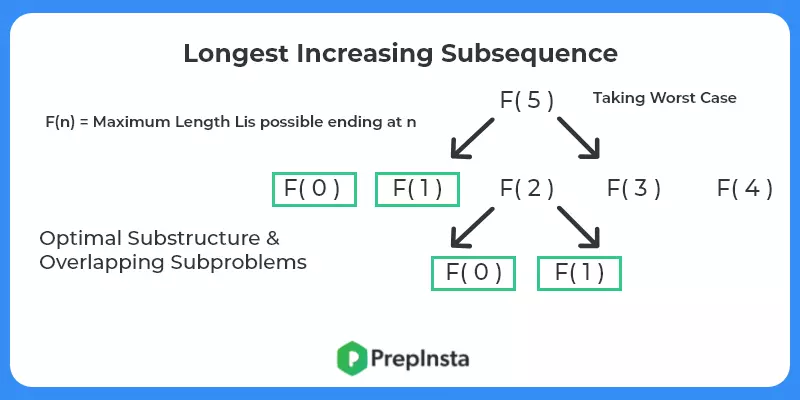Longest Increasing Subsequence
Longest Increasing Subsequence
In the Longest Increasing Subsequence problem, we are asked to find the length of the longest increasing subsequence. It is a very famous problem that is asked in many coding rounds and interviews. Here we provide a c++ solution with an explanation of the problem.

Longest Increasing Subsequence Problem Desciption
We are given an array of n integers. What is the length of longest increasing subsequence.
Input:
- First line contains integer n – The size of array.
- Second line contains n integers.
Output:
The largest possible length.
Longest Increasing Subsequence Problem Solution Explanation
Solution (Top Down):
To build a top down solution we must follow the following steps –
- Break Down the Problem – Let’s suppose we create a function that outputs the length of longest increasing subsequence at index i.
F(i) = Length of Longest Increasing Subsequence ending at i.What can be our transitions?
F(i) = 1 + F(j) where j belongs to [0,i-1] such that arr[j] <= arr[i]
- Find the base case – Base case is int solution of smallest known problem. In this problem we know that F(0) = 1 (ie we only have one element in array and no left before it).
- Check for optimal substructure and overlapping sub problems – It is easy to see that the problem can be broken down into smaller problems. The optimal substructure and overlapping sub problems properties can be visualized below.

Code
Output
Lis is 4
Bottom up Solution
Here we create a dp array of length n. We iterate over dp array from 0 to n-1. For every index i we check all possible indices j, whether current index i can extend j.
Code
Output
Lis is 4



Login/Signup to comment